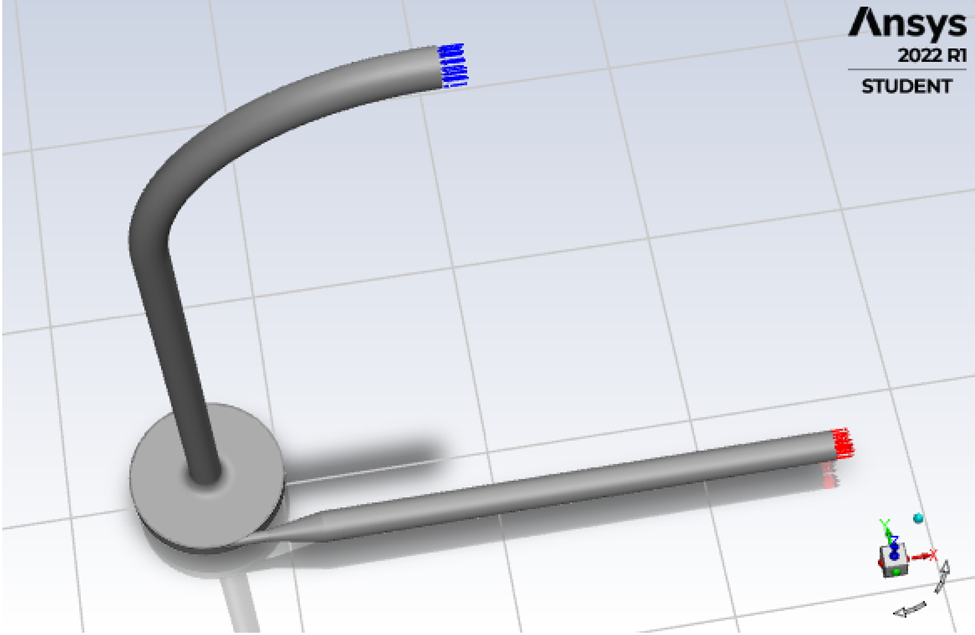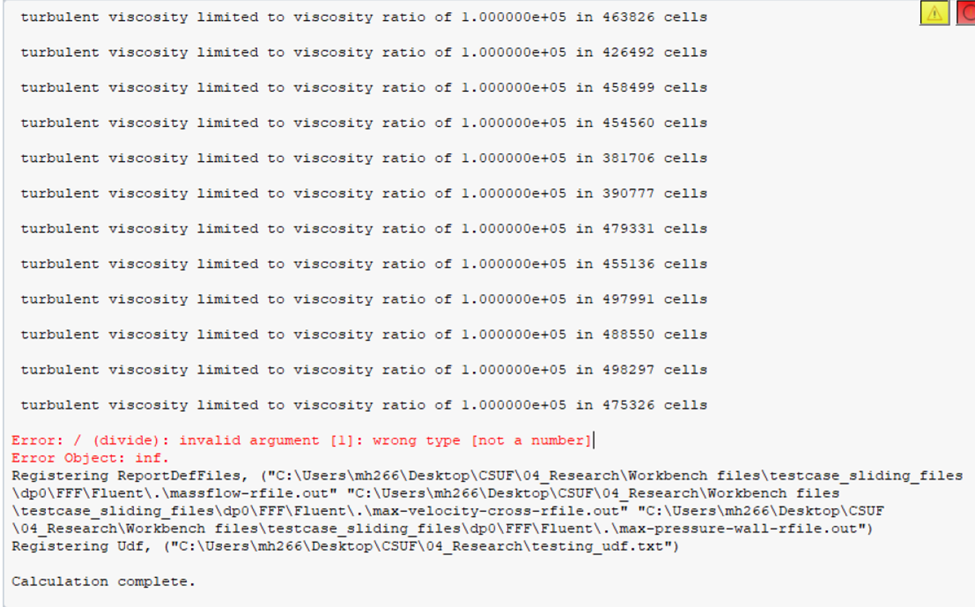-
-
July 12, 2022 at 9:06 pm
ianyylai
SubscriberHi all, I have been encountering this problem shown in the pic with simulations with parameters:
- RNG k-epsilon Transient
- Pressure-based Coupled scheme
- massflow inlet and pressure outlet BC with Intensity 5% and Hydraulic Diameter 0.012m for Turbulence Specification Method
- URF and Courant number 0.2 while Turbulent Viscosity 1
- Three boxes for Frozen Flux Formulation, Warped-face Gradient Correction, Higher order term relaxation
- Timestep size 0.002 and 25 iteration/timestep
The problem occurs when the three boxes are checked, the number of cell overlimit starts very low and gradually builds up to such level after around 20 timesteps. When the three boxes are unchecked, overlimit cells range between 1 and 9 and disappear soon after.
Online posts suggested me to drop timestep size, max iteration per timestep, and URF but they don't seem to work for me. Especially when URF are quite low already. Assuming I wish to keep those 3 boxes checked, does anyone has any ideas? I have been bugged for long. The model is also attached. Thanks a lot!
-
July 13, 2022 at 8:46 pm
Karthik Remella
AdministratorHello,
How is your mesh? What is your skewness? Also, which mesh are you using for this model?
When you receive this message about Turbulent Viscosity, have you tried to identify the region where you see these high values?
Also, do you obtain a converged solution every single time step?
Here is some information you can read about Courant Number and URFs.
44.13. Solution Controls Task Page (ansys.com)
Karthik
-
July 14, 2022 at 6:24 am
Amine Ben Hadj Ali
Ansys EmployeeIf the case runs well with the additional numerical tricks: why are you enabling them?
-
July 14, 2022 at 8:24 am
Rob
Forum ModeratorTo add, vortex diodes can have some interesting flow fields. You may want to consider running RSM if you reverse the inlet & outlet. Also you may need a lot more mesh resolution in the chamber than you think.
For additional reading on fluidic devices look up John Tippetts, formerly of University of Sheffield.
-
July 14, 2022 at 11:52 am
Amine Ben Hadj Ali
Ansys EmployeeBefore trying RSM keep using SST with Curvature correction but again why you need to enable the three boxes? (Warped Face Gradients is recommended for polyhedral cases).
-
July 17, 2022 at 1:06 am
ianyylai
SubscriberHi karthik and all, thanks for the replies!
I am using tetrahedron elements since hexes are not good on those curvatures and tight turns. The majority of the skewness ratio is below 0.9, while none is above 0.95. The order is linear as default in CFD settings, and the number of elements are limited to around 512000 as I am using the STudent License for now.
And I had read that in some places in https://www.afs.enea.it/project/neptunius/docs/fluent/html/th/main_pre.htm: The Warped-Face Gradient Correction is designed to improve gradient accuracy for all gradient methods. The High Order Term Relaxation improves the solution behavior of flow simulations when higher (above 1st) order spatial discretization is used. The standard fully implicit discretization of the convective part of the transport equation of Temporal Discretization produces non-linear terms, so the Frozen Flux Formulation reduces the non-linear character and improve the convergence within each time step.
That's why I applied those three boxes, but it seems that you think they are not appropriate? I am rather fresh in this so it will be great if you can provide with more details!! Thanks!
-
July 17, 2022 at 2:52 am
ianyylai
SubscriberI would like to correct the above statement since I didn't read the line from that website, but I read the above concepts from Ansys Fluent Guide 18 (published Jan 2017 version) which one of them writes the following. That's why I checked the three boxes as I thought it would help the simulation accuracy.
-
July 18, 2022 at 5:58 am
Amine Ben Hadj Ali
Ansys EmployeeFirst of all you need to use an official Ansys website and not a help hosted on another third-party website. WFGC is required for polyhedral cells. HOTR might improve stability and Frozen Flux might do the same. So all are numerical recipies to make runs more stable but not more accurate. As it is with numerical recipies they are are meds for every situation. Moreover we are enabling and disabling them the same time: you should do it once per time. But if the "virigin" setup is running and providing good convergence trends by terms of Residual, Imbalances and Monitoring: I won't change anything in the default setup!
-
July 18, 2022 at 6:43 pm
ianyylai
SubscriberHi Ali, thanks for your advice! So, basically those settings are not needed to apply if the calculation is stable enough?
It is strange though, since I was under the impression that the theory guide was published by Ansys Inc as it was written on the cover. I will go through it again.
-
- The topic ‘Turbulent Viscosity Limit’ is closed to new replies.



-
2788
-
965
-
851
-
599
-
591

© 2025 Copyright ANSYS, Inc. All rights reserved.








